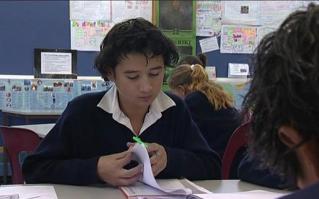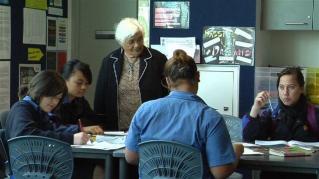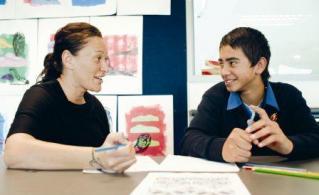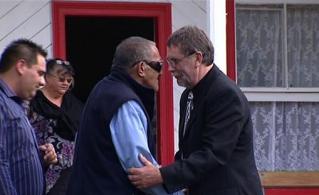Section navigation

In this clip we see the benefits of teachers, students and whānau coming together to set goals – and to celebrate success in learning. We see the impact on the students’ motivation and confidence when they are allowed to set the direction, and choose their own learning contexts. The result is increased autonomy, with students demonstrating the key competency of self-management.
Such an approach is congruent with Ka Hikitia, the Ministry’s Māori education strategy, which emphasises the importance of schools consulting with Māori parents to determine their aspirations – and including them in the process – in order to achieve the goal of Māori students reaching their potential.
Questions / Things to think about / Activities
- Whānau undoubtedly have aspirations for their tamariki. What strategies can we adopt to discover these moemoeā?
- Knowing that success is a springboard to further success, in what ways could we celebrate Māori student success with whānau?
- Ka Hikitia, the Ministry's Māori education strategy, identifies Māori language education as an area of vulnerability for Māori students. How can we support the Māori language teacher/s in our school so that they can enhance the quality of teaching and learning in their classrooms; for example, by getting them to focus on curriculum goals or helping them to work with students (and whānau) on goal-setting?
- Ka Hikitia also highlights the issue of Māori students becoming disengaged with secondary school, especially in years 9 and 10. How can we specifically support year 9-10 Māori students and their whānau to make decisions about their future education? How can we include Māori students in decision-making that affects the quality of their education?
- How can we show whānau that we want a genuine partnership, where both partners are equal and where respective strengths are honoured, in order to achieve shared goals?
- How does an inquiry approach demonstrate the spirit of ‘ako’, where students can, with teachers and parents/whānau, set learning goals and choose their own learning contexts, thus giving them ownership and promoting self-management?
- For students at Taihape Area School, what were some of the benefits of goal setting, and celebrating success; for example, increased motivation, engagement, confidence and direction?
- For teachers at Taihape Area School, what were some of the results of goal setting, and celebrating success; for example, communicating success criteria and providing a rationale for learning?
- For whānau at Taihape Area School, what were some of the benefits of goal setting, and celebrating success; for example, feelings of pride and adding to own knowledge?
- How can we empower our students to take more ownership of their learning; for example, by choosing their own contexts for learning?
Filed under: Productive partnerships | Effective leaders





